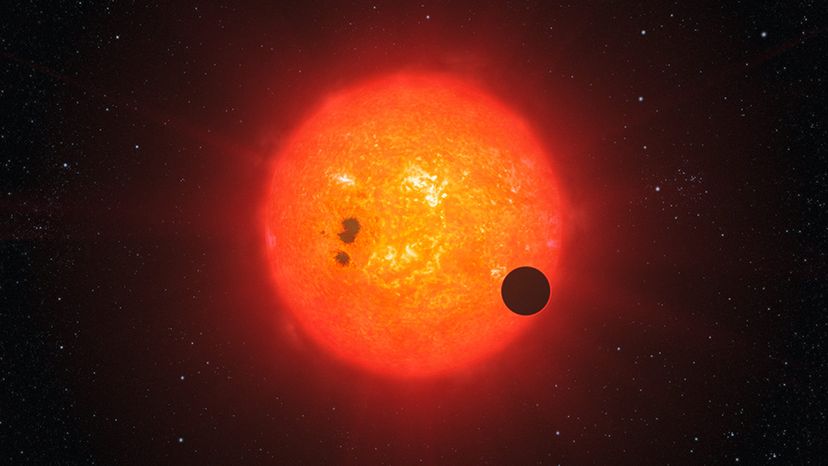This artist’s impression shows how the super-Earth GJ1214b surrounding the nearby star GJ1214 may look. ESO/L. Calçada
Discovered in 2009, the exoplanet GJ 1214b (sometimes written as planet GJ 1214 b or GJ1214b) continues to intrigue scientists. Located 40 light-years away in the constellation Ophiuchus, this unique world challenges our understanding of planetary diversity. It was the first “mini-Neptune” or “sub-Neptune” found. These are planets that are smaller than Neptune but larger than Earth. For more than 10 years, scientists have been trying to get a closer look at GJ 1214b but couldn’t because of its dense and steamy atmosphere.
Now, they can. Thanks to NASA’s new James Webb Space Telescope (JWST) which is able to look at planetary objects previously obscured by haze, scientists could observe the planet’s atmosphere by measuring the heat it emits while orbiting its host star.
Using the JWST was “like seeing Chicago on a sunny day instead [of a gray, foggy day]. You can see everything, and the picture becomes so much richer and more beautiful,” said University of Chicago astrophysicist Prof. Jacob Bean, one of the leaders of the observation team, in a press release.
New Findings About GJ 1214b’s Atmosphere
The scientists discovered that the planet has a metal-rich atmosphere with a lot of elements heavier than hydrogen, which might indicate an atmosphere of water vapor, methane or some mix of the two.
Researchers believe this was not the primordial atmosphere. Rather, the host star GJ 1214 (a red dwarf star) might have started with a hydrogen-rich atmosphere and lost a lot of the gas along the way. Planets often lose hydrogen from their atmosphere because it is so light. The other possibility is that it was formed from heavier elements to begin with, perhaps an icier, water-rich material.
Other Discoveries About GJ 1214b
The scientists also discovered that though the planet was hot by human standards, it wasn’t as hot as expected. This meant that its clouds were reflecting rather than absorbing starlight.
“Whatever is making up the hazes or clouds is not what we expected. It’s bright, it’s reflective and that’s confusing and surprising,” said Eliza Kempton, professor at the University of Maryland, USA, and lead author of the research article, in a press release. “This is going to point us toward a lot of further studies to try to understand what those hazes could be.”
The James Webb Space Telescope is operated by the Space Telescope Science Institute in Baltimore, Maryland. The team, which included scientists from the University of Maryland and the University of Chicago, NASA Ames Research Center and Johns Hopkins University, published their results in Nature in May 2023.
Facts About GJ 1214b
GJ 1214b has a planetary mass about six times that of Earth and is very hot (around 450 degrees Fahrenheit or 232 Celsius), and so is not likely to be one of the habitable planets. It is considered a super-Earth exoplanet, meaning that it is larger than Earth and smaller than Neptune, not that it is Earth-like. It is only 42.7 times the diameter of Earth and orbits about 1 million miles (1.6 million kilometers) from its star in a mere 38 hours (as opposed to Earth in our solar system taking 365 days to go around the sun.)
This exoplanet is tidally locked, meaning that one side always shows its face to its star. So, one side of the planet is in permanent daylight with scorching sun, while the other side is in permanent freezing darkness. It has a thick and hazy atmosphere. Even so, heat is still transported around this planet by the dense atmosphere. Since heavier and lighter molecules transport heat differently, scientists could figure out the makeup of the planet from measuring the flow of heat.
Scientists think that GJ 1214b formed further from its star than it is now. Then something happened to send it closer to the red dwarf star it orbits. The closer it got, the more of its atmosphere was stripped away.
This article was created in conjunction with AI technology, then fact-checked and edited by a HowStuffWorks editor.
Preview
>>> Read full article>>>
Copyright for syndicated content belongs to the linked Source : How To Stuff – https://science.howstuffworks.com/gj-1214b.htm

